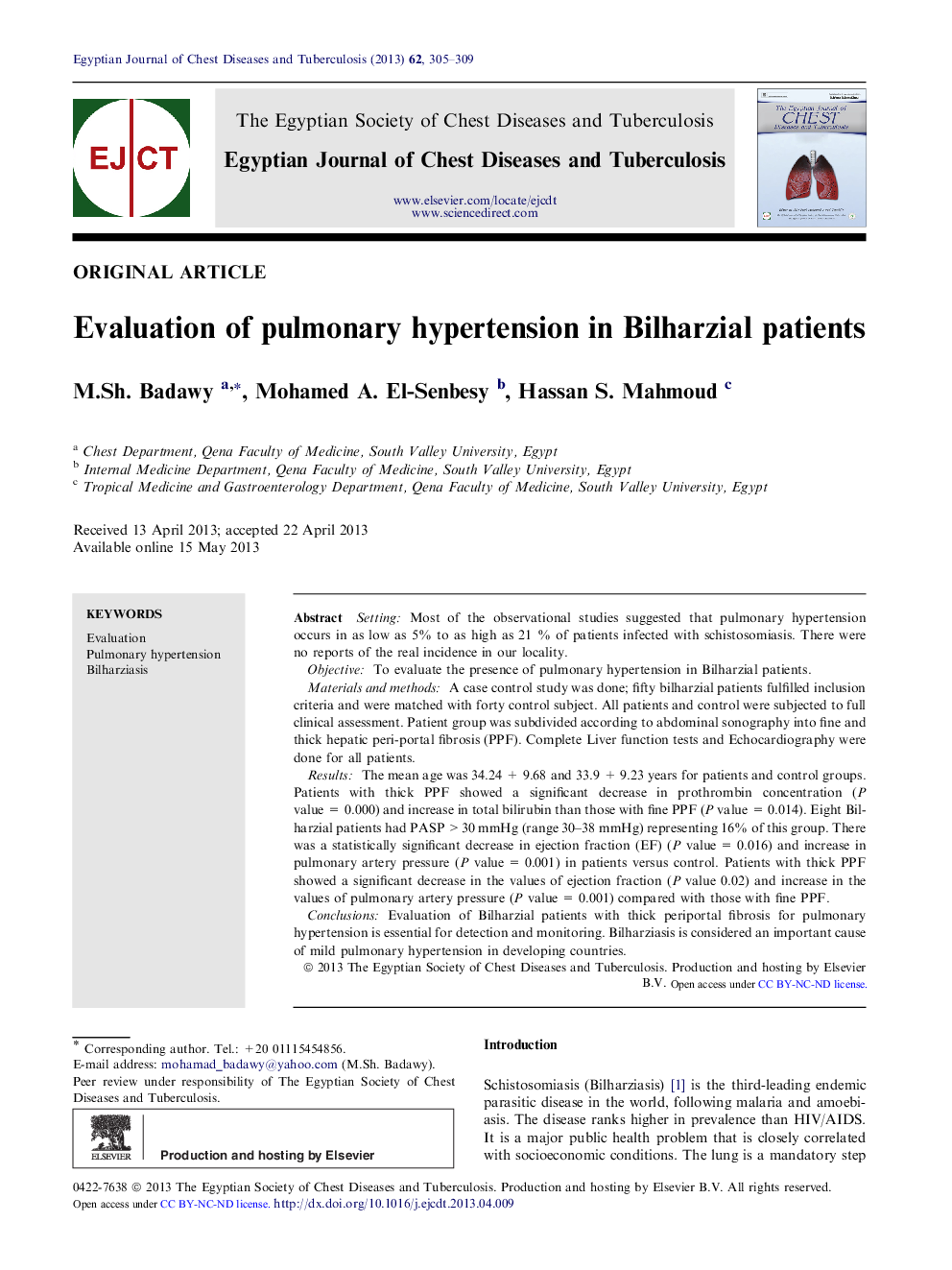| Article ID | Journal | Published Year | Pages | File Type |
|---|---|---|---|---|
| 3400063 | Egyptian Journal of Chest Diseases and Tuberculosis | 2013 | 5 Pages |
SettingMost of the observational studies suggested that pulmonary hypertension occurs in as low as 5% to as high as 21 % of patients infected with schistosomiasis. There were no reports of the real incidence in our locality.ObjectiveTo evaluate the presence of pulmonary hypertension in Bilharzial patients.Materials and methodsA case control study was done; fifty bilharzial patients fulfilled inclusion criteria and were matched with forty control subject. All patients and control were subjected to full clinical assessment. Patient group was subdivided according to abdominal sonography into fine and thick hepatic peri-portal fibrosis (PPF). Complete Liver function tests and Echocardiography were done for all patients.ResultsThe mean age was 34.24 + 9.68 and 33.9 + 9.23 years for patients and control groups. Patients with thick PPF showed a significant decrease in prothrombin concentration (P value = 0.000) and increase in total bilirubin than those with fine PPF (P value = 0.014). Eight Bilharzial patients had PASP >30 mmHg (range 30–38 mmHg) representing 16% of this group. There was a statistically significant decrease in ejection fraction (EF) (P value = 0.016) and increase in pulmonary artery pressure (P value = 0.001) in patients versus control. Patients with thick PPF showed a significant decrease in the values of ejection fraction (P value 0.02) and increase in the values of pulmonary artery pressure (P value = 0.001) compared with those with fine PPF.ConclusionsEvaluation of Bilharzial patients with thick periportal fibrosis for pulmonary hypertension is essential for detection and monitoring. Bilharziasis considered an important cause of mild pulmonary hypertension in developing countries.
